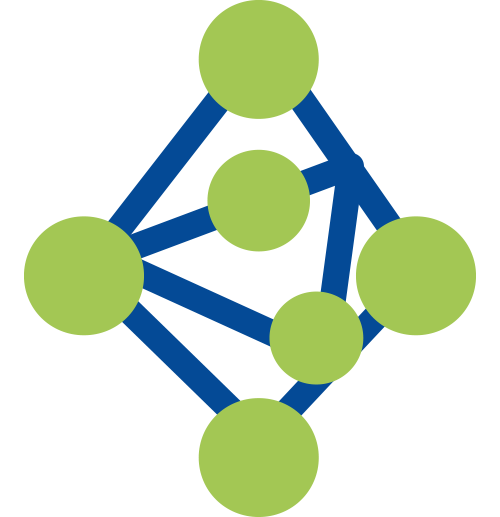CRISPR-Cas9 screening using single guide RNA (sgRNA) libraries has emerged as a powerful tool for functional genomics studies. By introducing targeted mutations in a pooled format, researchers can interrogate the functions of thousands of genes in parallel. This comprehensive guide covers the key principles and best practices for designing, synthesizing, and screening CRISPR sgRNA libraries.
Understanding sgRNA Libraries
A CRISPR sgRNA library is a heterogeneous population of lentiviral vectors, each containing a unique sgRNA sequence that targets a specific gene in the genome. These libraries typically contain 3-6 sgRNAs per gene to ensure efficient knockout or transcriptional modulation.
sgRNA design algorithms aim to select sequences with high on-target activity and minimal off-target effects. The target region varies based on the application, such as exons for knockouts or promoter/enhancer regions for activation/repression studies.
Designing Optimized sgRNA Libraries
Effective sgRNA library design is crucial for successful screening outcomes. Here are some key considerations:
1. Determine Library Scale and Coverage
- Genome-wide libraries target all protein-coding genes (e.g., the human GeCKOv2 library with ~123,000 sgRNAs).
- Focused libraries target specific gene families or pathways of interest.
2. Select Appropriate sgRNA Design Tools
- Use validated algorithms like CCTop, CRISPR.mit.edu, or Synthego's design tool.
- Consider on-target scoring metrics, off-target predictions, and sequence uniqueness.
3. Optimize sgRNA Representation
- Include multiple sgRNAs (3-6) per gene for robust phenotypic effects.
- Maintain uniform representation across the library during synthesis.
4. Choose a Suitable Vector System
- Single vector (sgRNA + Cas9) or dual vector (separate sgRNA and Cas9 plasmids).
- Consider promoters, selection markers, and delivery methods (lentiviral, AAV, etc.).
Synthesizing High-Quality sgRNA Libraries
The synthesis process is critical for ensuring library quality and performance. Dynegene's ultra-high-throughput DNA synthesis capabilities enable the production of optimized sgRNA libraries with unparalleled precision and scale.
Dynegene's Advantages:
- Proprietary oligo synthesis technology for printing up to 1 million oligos on a single chip.
- Advanced chemistries for synthesizing longer, high-fidelity oligos.
- Precise control over oligo representation and ratios within the library.
- Rigorous quality control and sequence verification processes.
When you require custom-designed libraries tailored to your research needs, Dynegene's cutting-edge synthesis platform ensures the highest quality and reproducibility.
Executing Successful sgRNA Library Screens
Proper experimental design and execution are essential for maximizing the potential of CRISPR sgRNA library screens. Here are some key considerations:
1. Determine Screening Approach
- Positive selection: Identify genes that confer a growth advantage when disrupted.
- Negative selection: Identify essential genes required for cell viability or proliferation.
- Reporter-based screens: Identify genes involved in specific cellular processes or pathways.
2. Optimize Viral Transduction and Cas9 Expression
- Achieve high transduction efficiency (>70%) for comprehensive library coverage.
- Confirm robust Cas9 expression in the cell line of interest.
3. Maintain Sufficient Library Representation
- Aim for at least 500-1000 cells per sgRNA during screening to avoid bottlenecking.
- Passage cells appropriately to maintain library complexity.
4. Implement Appropriate Controls
- Include non-targeting sgRNA controls to account for viral effects.
- Spike in known positive and negative controls for assay validation.
5. Analyze Screening Data
- Use established computational pipelines like MAGeCK or BAGEL for sgRNA deconvolution.
- Validate top hits using individual sgRNA constructs or complementary approaches.
Applications and Case Studies
CRISPR sgRNA library screens have enabled groundbreaking discoveries across diverse research areas, including:
- Identifying novel drug targets and resistance mechanisms in cancer.
- Mapping genetic interactions and synthetic lethality in disease models.
- Dissecting signaling pathways and cellular processes like autophagy or apoptosis.
- Exploring gene functions in non-coding regions of the genome.
Conclusion
CRISPR sgRNA libraries have revolutionized functional genomics research by enabling high-throughput interrogation of gene functions at an unprecedented scale. By following the principles outlined in this guide, researchers can design, synthesize, and screen optimized sgRNA libraries to unlock new insights into complex biological processes and accelerate the discovery of novel therapeutic targets.
Dynegene's expertise in ultra-high-throughput DNA synthesis, combined with its commitment to quality and innovation, positions the company as a trusted partner for scientists and organizations seeking to harness the full potential of CRISPR sgRNA library screening.
To learn more about Dynegene's cutting-edge sgRNA library solutions or to discuss your specific research needs, please visit our website or contact our team of experts today.
 NGSHybridization Capture DNA Probe QuarStar Human All Exon Probes 4.0 (Tumor) QuarStar Human All Exon Probes 4.0 (Standard) QuarStar Liquid Pan-Cancer Panel 3.0 QuarStar Pan-Cancer Lite Panel 3.0 QuarStar Pan-Cancer Fusion Panel 1.0 QuarStar Pan Cancer Panel 1.0 Hybridization Capture RNA Probe QuarXeq Human All Exon Probes 3.0 HRD panel Library Preparation DNA Library Preparation Kit Fragmentation Reagent mRNA Capture Kit rRNA Depletion Kit QuarPro Superfast T4 DNA Ligase Hybridization Capture QuarHyb Super DNA Reagent Kit QuarHyb DNA Plus 2 Reagent Kit QuarHyb DNA Reagent Kit Plus QuarHyb One Reagent Kit QuarHyb Super Reagent Kit Pro Dynegene Adapter Family Dynegene Blocker Family Multiplex PCR QuarMultiple BRCA Amplicon QuarMultiple PCR Capture Kit 2.0 PathoSeq 450 Pathogen Library Corollary Reagent Streptavidin magnetic beads Equipment and Software The iQuars50 NGS Prep System
NGSHybridization Capture DNA Probe QuarStar Human All Exon Probes 4.0 (Tumor) QuarStar Human All Exon Probes 4.0 (Standard) QuarStar Liquid Pan-Cancer Panel 3.0 QuarStar Pan-Cancer Lite Panel 3.0 QuarStar Pan-Cancer Fusion Panel 1.0 QuarStar Pan Cancer Panel 1.0 Hybridization Capture RNA Probe QuarXeq Human All Exon Probes 3.0 HRD panel Library Preparation DNA Library Preparation Kit Fragmentation Reagent mRNA Capture Kit rRNA Depletion Kit QuarPro Superfast T4 DNA Ligase Hybridization Capture QuarHyb Super DNA Reagent Kit QuarHyb DNA Plus 2 Reagent Kit QuarHyb DNA Reagent Kit Plus QuarHyb One Reagent Kit QuarHyb Super Reagent Kit Pro Dynegene Adapter Family Dynegene Blocker Family Multiplex PCR QuarMultiple BRCA Amplicon QuarMultiple PCR Capture Kit 2.0 PathoSeq 450 Pathogen Library Corollary Reagent Streptavidin magnetic beads Equipment and Software The iQuars50 NGS Prep System Primers and Probes
Primers and Probes RNA SynthesissgRNA miRNA siRNA
RNA SynthesissgRNA miRNA siRNA



 Gene Synthesis
Gene Synthesis Oligo Pools
Oligo Pools CRISPR sgRNA Library
CRISPR sgRNA Library Antibody Library
Antibody Library Variant Library
Variant Library


 Tel: 400-017-9077
Tel: 400-017-9077 Address: Floor 2, Building 5, No. 248 Guanghua Road, Minhang District, Shanghai
Address: Floor 2, Building 5, No. 248 Guanghua Road, Minhang District, Shanghai Email:
Email: Tel: 400-017-9077
Tel: 400-017-9077 Address: Floor 2, Building 5, No. 248 Guanghua Road, Minhang District, Shanghai
Address: Floor 2, Building 5, No. 248 Guanghua Road, Minhang District, Shanghai Email:
Email: 







